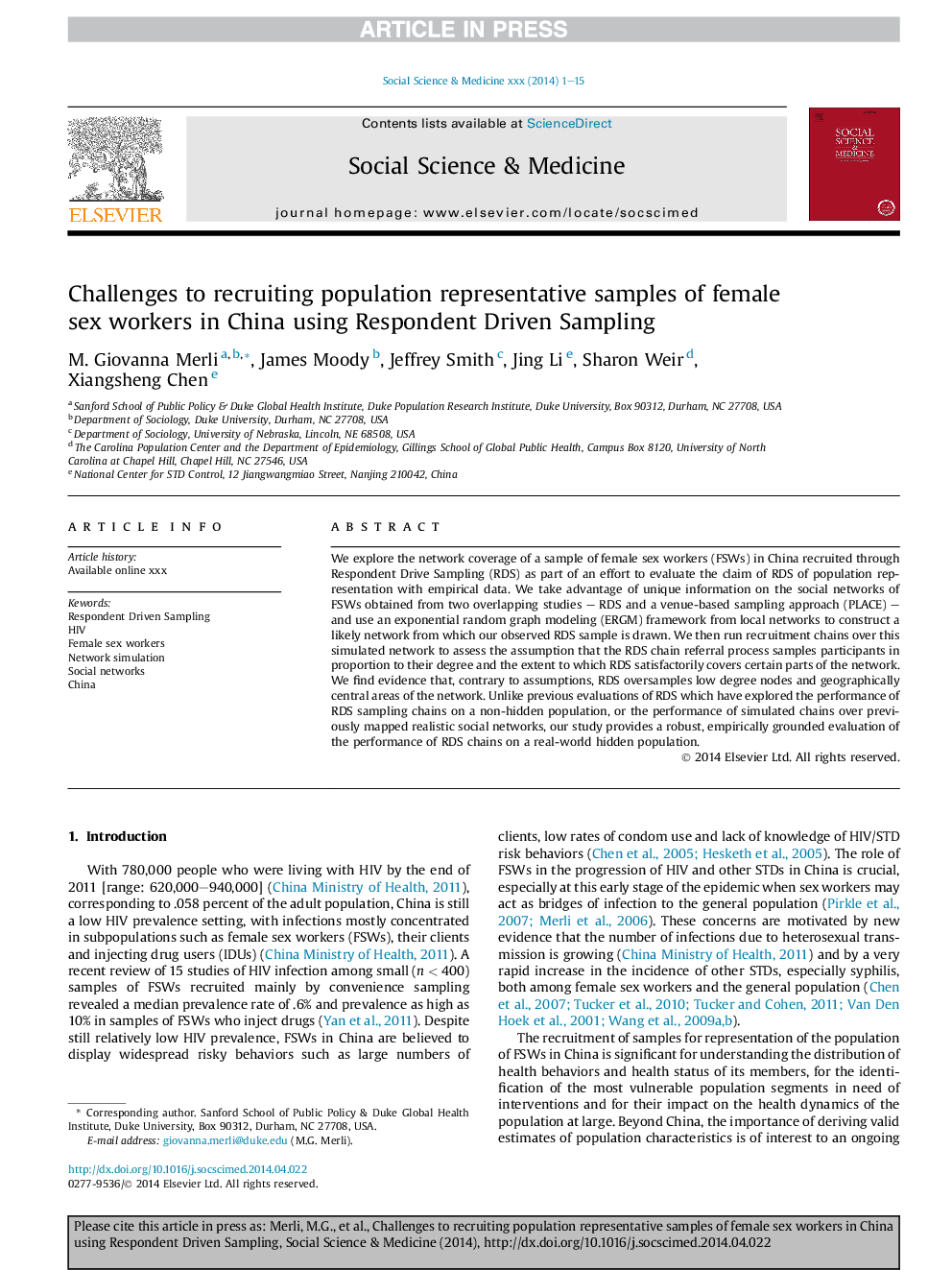| Article ID | Journal | Published Year | Pages | File Type |
|---|---|---|---|---|
| 7333555 | Social Science & Medicine | 2015 | 15 Pages |
Abstract
We explore the network coverage of a sample of female sex workers (FSWs) in China recruited through Respondent Drive Sampling (RDS) as part of an effort to evaluate the claim of RDS of population representation with empirical data. We take advantage of unique information on the social networks of FSWs obtained from two overlapping studies - RDS and a venue-based sampling approach (PLACE) - and use an exponential random graph modeling (ERGM) framework from local networks to construct a likely network from which our observed RDS sample is drawn. We then run recruitment chains over this simulated network to assess the assumption that the RDS chain referral process samples participants in proportion to their degree and the extent to which RDS satisfactorily covers certain parts of the network. We find evidence that, contrary to assumptions, RDS oversamples low degree nodes and geographically central areas of the network. Unlike previous evaluations of RDS which have explored the performance of RDS sampling chains on a non-hidden population, or the performance of simulated chains over previously mapped realistic social networks, our study provides a robust, empirically grounded evaluation of the performance of RDS chains on a real-world hidden population.
Related Topics
Health Sciences
Medicine and Dentistry
Public Health and Health Policy
Authors
M. Giovanna Merli, James Moody, Jeffrey Smith, Jing Li, Sharon Weir, Xiangsheng Chen,
